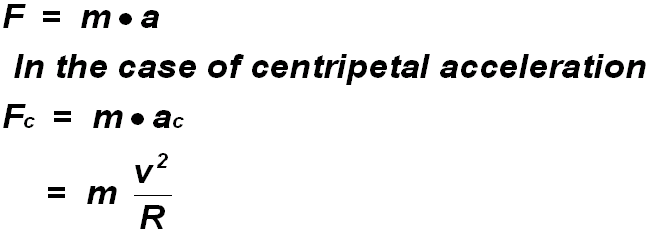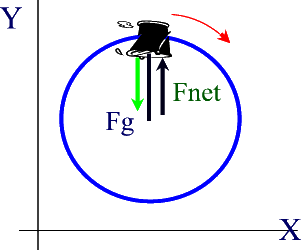Centripetal Force
Associated with the centripetal acceleration there must be a force. In the experiment where you swirl a rubber stopper attached to a string the force on the rubber stopper must counter balance that of the mass attached at the opposite end of the string. Thus, the higher the mass, the stronger force of gravity [Fg = m X g], the faster you needed to swirl the rubber stopper.
To keep the rubber stopper moving in the circle you had to exert an inward force. From Newton's Third Law, the ball exerts an outward force keeping the string in tension. If you let go of the string, the rubber stopper flies off in a tangential path.
From Newton's Second Law

Examples:
1. A child playing on a beach fills a 500 mL bucket with water, attaches a 1.0 m string to it and whirls it in a horizontal circle 1.2 m above his head. Every time he turns past a huge, very muscular lifeguard standing 5.0 m away, he counts the number of spins. After exactly 30 s the child had counted 15 revolutions (spins). The irked lifeguard, (who has been admonishing the child to stop all along) starts to walk towards the child. The child gets scared and suddenly stops spinning the bucket and lets go of the string.
a) Explain what happens.
c) Use your knowledge of Physics to give quantitative analysis of the events that unfold.
2. With what speed must the child from Example 1 whirl the bucket so that no water falls out from it.
Solution:

At the top the net force (and hence the pressure on the water) must be zero.
At this critical speed, the force of gravity provides the necessary centripetal acceleration.
Therefore Fg = Fc.



